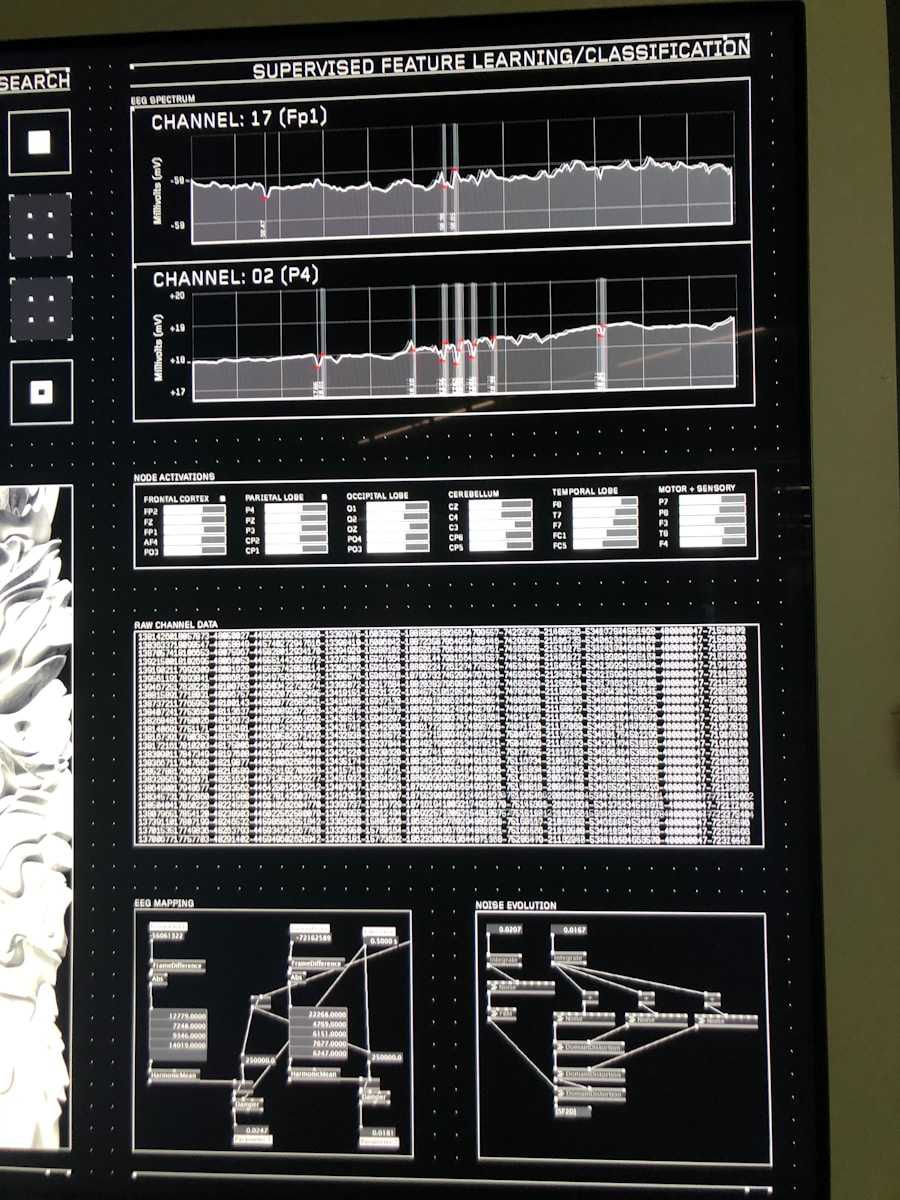Jaeger and Zipkin serve as powerful tools for capturing detailed span data within distributed environments. Implementing these platforms enables precise visualization of service interactions, allowing engineers to pinpoint latency sources and bottlenecks throughout complex transaction chains.
The instrumentation process assigns unique identifiers to each operation segment, forming a comprehensive chain that maps every component involved in processing client inputs. This segmented approach illuminates the path taken by individual calls across microservices, revealing performance anomalies and unexpected dependencies.
By collecting temporal metadata alongside contextual tags, these frameworks facilitate granular inspection of asynchronous processes and concurrent executions. Analyzing collected traces reveals critical insights into system behavior under load, guiding targeted optimizations that improve throughput and reduce error rates.
Utilizing open-source solutions like Jaeger or Zipkin not only supports real-time diagnostics but also integrates smoothly with popular observability stacks. Their extensible architectures allow customization of sampling strategies and storage backends, providing flexibility tailored to operational scale and complexity.
Tracing systems: request flow analysis
Effective examination of distributed transactions requires capturing detailed metadata about each operation segment, commonly known as spans. By aggregating these spans into a coherent sequence, it becomes possible to reconstruct the lifecycle of any individual invocation within decentralized networks. This method allows precise identification of bottlenecks and anomalies in multi-node environments, which is critical for maintaining performance and security in blockchain infrastructures.
Implementations such as Jaeger provide open-source frameworks designed specifically for this purpose. They facilitate real-time tracking by instrumenting service calls across microservices or nodes, enabling granular visibility into inter-service communication patterns. Utilizing such tools helps researchers and engineers correlate event timings, error rates, and resource consumption metrics, unveiling hidden dependencies that affect overall throughput.
Experimental approach to span capture and instrumentation
To conduct meaningful investigations, begin by integrating instrumentation libraries compatible with your environment–these automatically generate span data corresponding to transaction segments. For example:
- Initialize tracing context propagation across asynchronous calls.
- Annotate each logical unit with start and end timestamps alongside contextual tags.
- Export collected traces to a centralized backend like Jaeger for aggregation and visualization.
This process transforms raw telemetry into structured datasets suitable for hypothesis testing regarding latency sources or failure modes within blockchain validation cycles.
An illustrative case study involves analyzing cross-shard communication delays on Ethereum 2.0 testnets. Applying span reconstruction revealed that serialization overheads during message passing accounted for over 30% additional latency compared to intra-shard operations. Such findings guided optimization efforts focused on protocol refinement at the network layer.
The above metrics enable systematic dissection of distributed ledger operations, fostering reproducible experiments where variables like network congestion or node synchronization can be isolated and studied independently. Adopting this scientific methodology promotes incremental improvement through data-driven insights rather than trial-and-error adjustments.
The synthesis of blockchain technology principles with advanced observability techniques invites continuous exploration. Encouraging experimentation with different instrumentation strategies–such as sampling policies or adaptive tracing thresholds–can reveal subtle system behaviors otherwise obscured in aggregate logs. Thus, meticulous documentation and iterative validation become paramount tools for advancing understanding within decentralized computing ecosystems.
Identifying Request Entry Points in Distributed Tracing Architectures
Pinpointing the initial ingress in distributed tracing frameworks requires focused instrumentation at network boundaries and API gateways. Capturing this pivotal moment enables accurate mapping of service invocation sequences and latency measurements. Tools such as Jaeger and Zipkin provide mechanisms to define these entry points explicitly by tagging incoming HTTP headers or RPC metadata, ensuring that trace identifiers propagate correctly through the microservice mesh.
Effective localization of the ingress event hinges on correlating client-originated signals with backend processing stages. This often involves intercepting traffic at load balancers or reverse proxies where requests first contact backend environments. By embedding unique trace contexts at these junctures, one can reconstruct causal paths across asynchronous calls, revealing bottlenecks or failure domains with precision.
Methodologies for Pinpointing Initial Service Invocations
Instrumentation strategies vary depending on system architecture but converge on establishing a root span that marks the inception of a transaction. For instance, within blockchain-related APIs handling cryptocurrency operations, initial calls frequently originate from wallet interfaces or smart contract triggers. Monitoring these origins via Jaeger’s auto-instrumentation SDKs facilitates granular visibility into downstream processing times and error propagation.
Zipkin’s span annotations enhance this process by allowing developers to mark critical events such as authentication checks or nonce validations at entry points. This enriches temporal sequencing data, enabling experimental verification of hypotheses regarding throughput constraints or concurrency effects in distributed ledgers. Such targeted observability paves the way for iterative performance tuning and security audits.
- Network boundary probes: Capture inbound packets to assign trace IDs early.
- API gateway hooks: Inject context carriers during request acceptance.
- Middleware interceptors: Enrich spans with metadata reflecting client attributes.
The complexity increases when multiple ingress points exist concurrently, such as in decentralized finance (DeFi) platforms operating across cross-chain bridges. Differentiating between external user-triggered requests and internal orchestrations demands layered instrumentation aligned with service mesh policies–Istio integrations with Jaeger offer automated context propagation facilitating this differentiation experimentally.
An empirical approach involves setting up controlled experiments where synthetic workloads simulate user interactions while capturing comprehensive telemetry data via Zipkin collectors. Analyzing these datasets allows validation of assumptions about which ingress nodes introduce latency or errors first. Iterative refinement based on observed metrics fosters a robust understanding of system dynamics under varying loads.
The integration of tracing frameworks within blockchain ecosystems not only aids in troubleshooting but also enhances transparency around transaction provenance and timing accuracy. By methodically identifying initial touchpoints using tools like Jaeger and Zipkin, researchers can construct detailed causal chains that illuminate hidden dependencies and optimize resource allocation across distributed ledger networks.
Mapping Inter-Service Communications
To effectively visualize interactions within distributed architectures, employing span-based instrumentation is critical. Each span records the timing and metadata for discrete operations across services, enabling detailed reconstruction of asynchronous chains. Tools such as Zipkin and Jaeger provide open-source frameworks to collect and aggregate these spans, facilitating granular inspection of inter-component dialogues. By correlating unique identifiers across spans, one can delineate the exact sequence and latency of calls traversing microservices.
Implementing this methodology requires embedding trace context propagation into communication protocols like HTTP headers or gRPC metadata. This ensures continuity across service boundaries without loss of contextual information. In practice, deploying sampling strategies balances overhead with data fidelity, selectively capturing representative traces while maintaining system performance. Case studies from blockchain node networks demonstrate that integrated span capture reveals bottlenecks in consensus message exchange, improving throughput by pinpointing inefficiencies.
Advanced Techniques in Span Correlation and Visualization
Beyond basic instrumentation, advanced correlation leverages dynamic tagging and hierarchical relationships between spans to expose concurrency patterns and error propagation paths. For instance, Jaeger’s adaptive UI groups related spans into logical trees, clarifying nested invocations common in smart contract execution environments. Detailed timeline views assist researchers in hypothesizing about systemic delays introduced during cryptographic validation steps or inter-shard synchronization.
The experimental integration of distributed telemetry with blockchain analytics enables a feedback loop for iterative optimization. By systematically varying input parameters–such as transaction batching size or RPC call frequency–analysts observe corresponding shifts in span duration distributions. This empirical approach transforms abstract communication maps into actionable insights, guiding protocol refinement toward scalability without sacrificing decentralization guarantees.
Analyzing Latency in Request Paths
To accurately identify latency sources within distributed architectures, examining the detailed sequence of operations is paramount. Utilizing tools such as Jaeger and Zipkin allows for capturing individual spans representing discrete units of work, which together compose a comprehensive timeline. This segmentation enables isolation of bottlenecks by comparing durations across various service interactions, revealing points where delays accumulate.
Effective examination requires correlating data from multiple nodes to reconstruct the end-to-end journey of each interaction. Distributed instrumentation frameworks generate trace identifiers that maintain continuity between segments, facilitating visualization of how processing time distributes across components. This approach uncovers systemic inefficiencies, such as network overhead or resource contention, often invisible through traditional monitoring alone.
Stepwise Experimental Approach to Latency Detection
Begin by deploying instrumentation agents in critical microservices to capture timing metrics at granular intervals. Initiate controlled transactions with known input characteristics while recording spans via Zipkin or Jaeger collectors. Analyze aggregated results focusing on outlier durations and variance patterns within span sequences.
- Span duration comparison: Evaluate average and peak execution times per span to detect irregular slowdowns.
- Causal relationship mapping: Determine dependencies between spans to understand propagation delays.
- Error rate correlation: Cross-reference latency spikes with failure events for causation hypotheses.
This systematic methodology promotes reproducible findings and informed decision-making about optimization priorities.
A case study involving a blockchain transaction processing platform demonstrated that high latency predominantly originated from consensus verification steps rather than initial client request handling. By dissecting the distributed chain of events into distinct spans logged through Jaeger, developers identified serialization overheads and improved parallelization strategies accordingly.
The above distribution highlights how isolating specific operational stages guides targeted improvements without overhauling entire infrastructures unnecessarily.
Differentiating between synchronous and asynchronous processes within complex chains further clarifies latency origins. For example, asynchronous event-driven patterns may introduce queuing delays that manifest differently compared to blocking calls. Monitoring tools equipped with timestamped span data enable temporal alignment analysis to expose these subtleties.
The integration of open-source observability platforms like Zipkin and Jaeger into experimental environments encourages iterative refinement cycles. By continuously adjusting instrumentation granularity and replaying test scenarios, one cultivates deeper insight into system behavior under varying load conditions. Such scientific rigor ensures that latency mitigation strategies rest on empirical evidence rather than conjecture alone.
Conclusion
Implementing span-level inspection within distributed architectures using tools like Jaeger reveals subtle irregularities in transactional paths that would otherwise remain hidden. By correlating timing discrepancies and anomalous metadata patterns across interconnected nodes, one can isolate deviations from expected operational sequences with remarkable precision.
Such granular examination of telemetry enables proactive identification of performance bottlenecks and security threats, advancing fault detection beyond conventional log aggregation methods. For instance, abnormal latency spikes traced through a specific segment can signify resource contention or malicious interference, prompting targeted remediation without exhaustive manual searches.
Future Directions and Practical Implications
- Adaptive anomaly detection: Integration of machine learning models tailored for temporal and causal relationships between spans promises heightened sensitivity to evolving irregularities in complex environments.
- Cross-layer instrumentation: Combining protocol-level metrics with user behavior signals enhances contextual understanding of systemic disruptions, facilitating more accurate root-cause analysis.
- Scalability challenges: Optimizing data ingestion pipelines to handle exponentially increasing volumes demands innovative compression and sampling strategies that preserve critical diagnostic features.
- Blockchain interoperability: Applying these methodologies to decentralized ledgers can illuminate transaction propagation delays and consensus anomalies, thereby strengthening trustworthiness in distributed financial ecosystems.
The pursuit of refined visibility into request trajectories across multifaceted infrastructures is fundamental for maintaining reliability and security at scale. Engaging with experimental configurations–such as simulating injected faults or synthetic load variations–empowers analysts to build intuition about anomaly signatures within span hierarchies. This iterative approach encourages continuous refinement of detection heuristics aligned with the dynamic nature of modern digital services.









